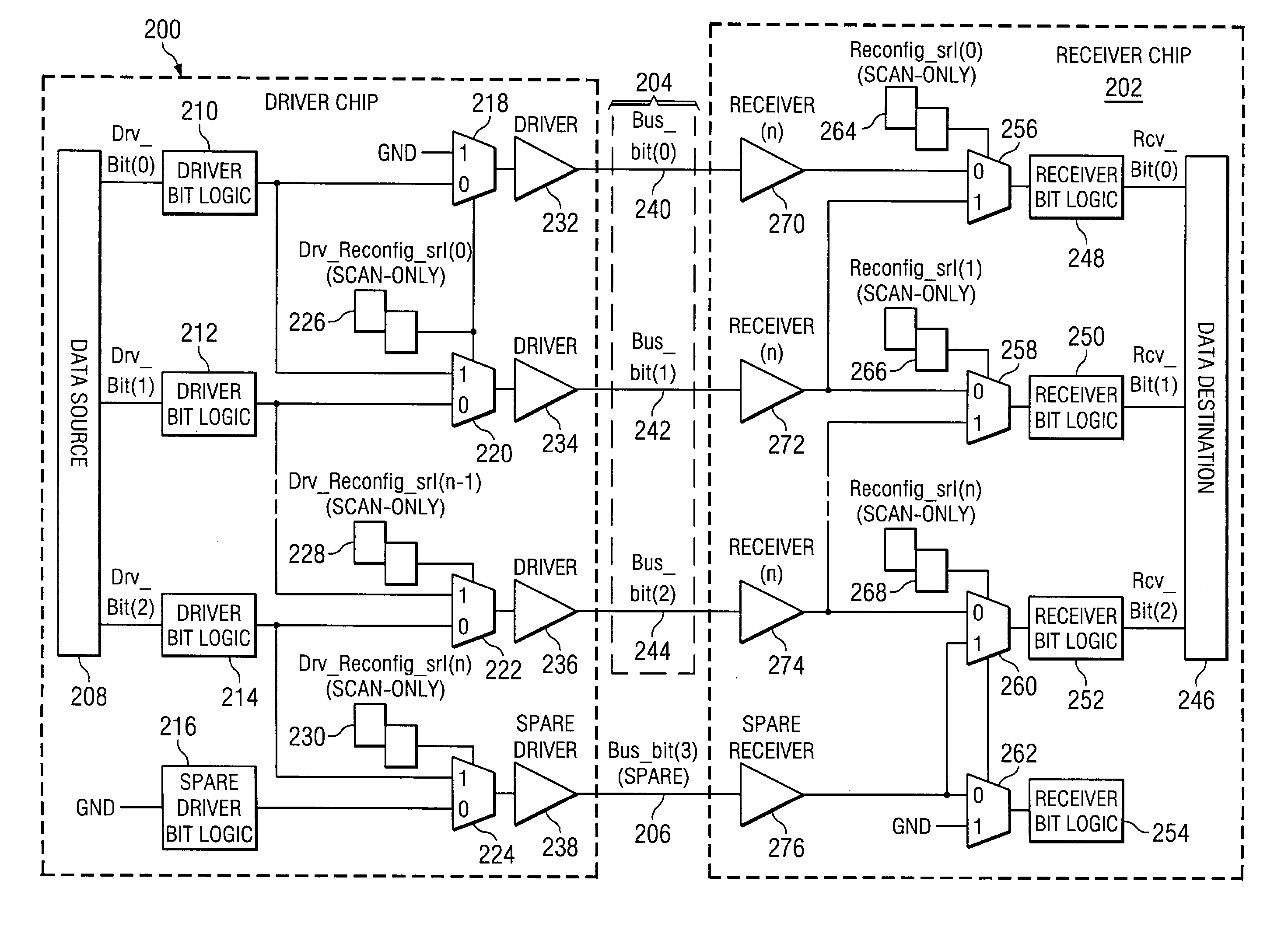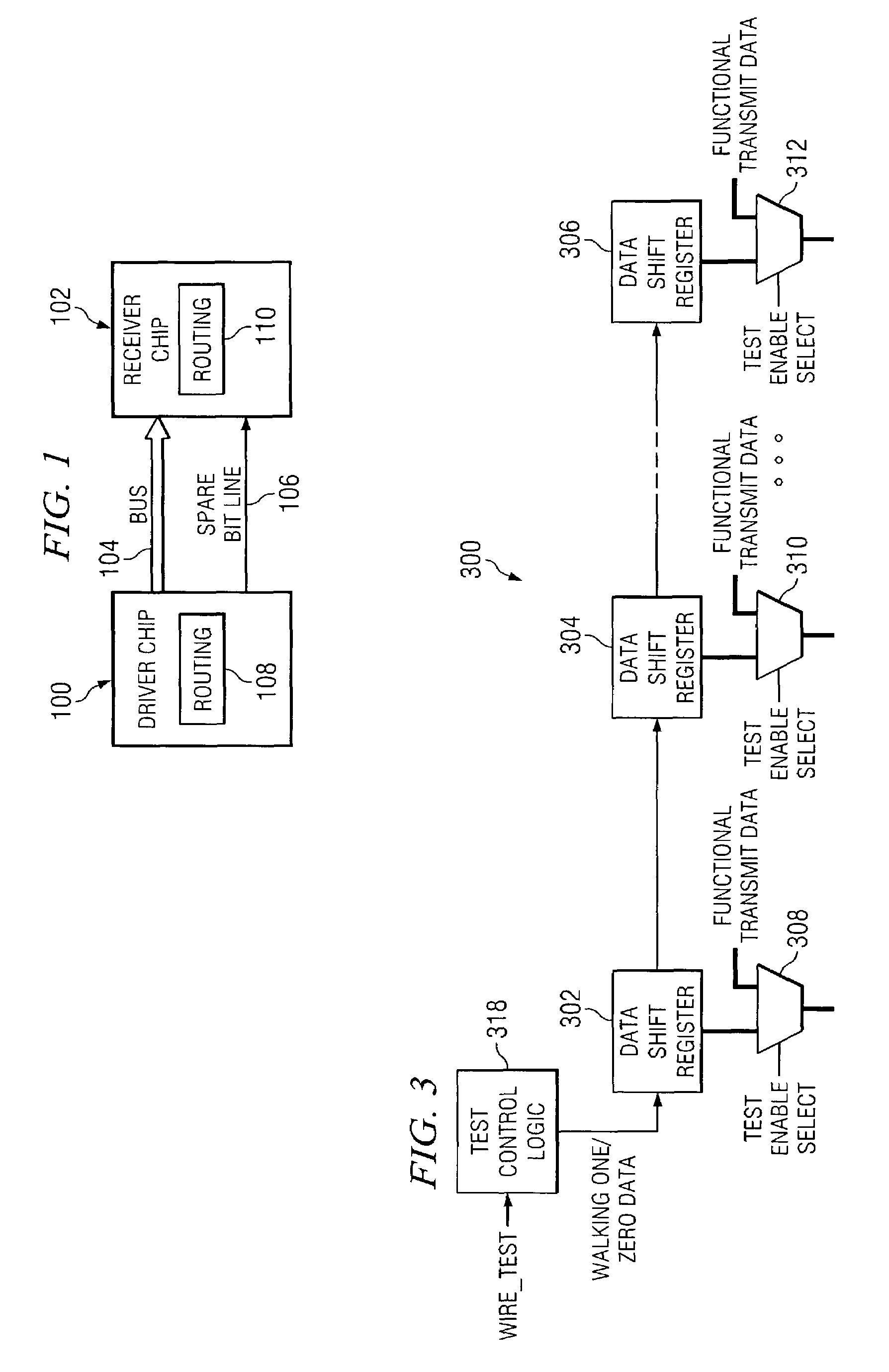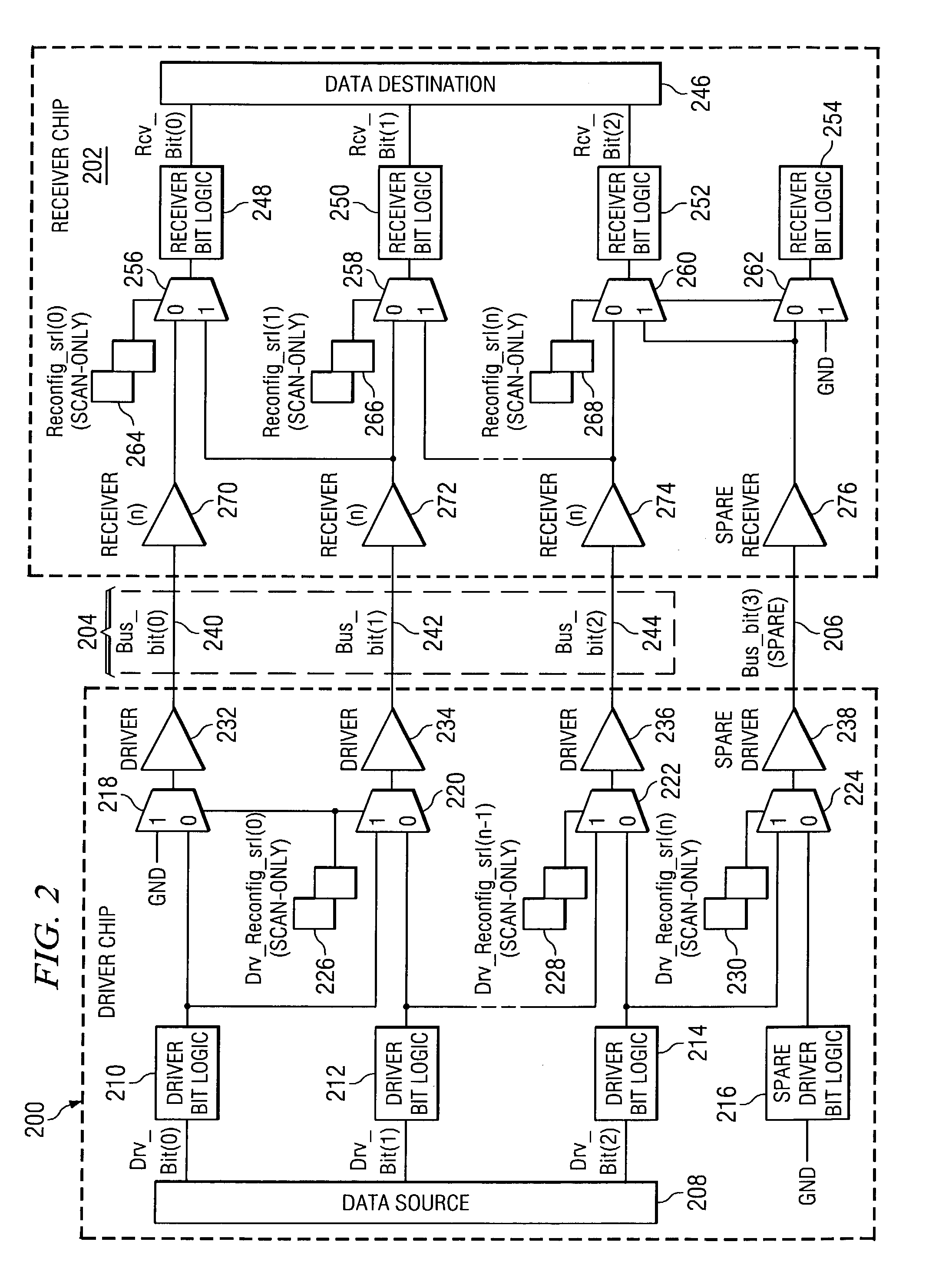Self-healing chip-to-chip interface
a chip-to-chip interface and self-healing technology, applied in the field of data processing systems, can solve the problems of scrapping or dumping of components identified with defects, such as non-functional signal paths, and increasing the number of interconnections between integrated circuits
- Summary
- Abstract
- Description
- Claims
- Application Information
AI Technical Summary
Benefits of technology
Problems solved by technology
Method used
Image
Examples
Embodiment Construction
[0016]With reference now to the figures, and in particular to FIG. 1, a diagram illustrating chips with a self-healing interface is depicted in accordance with a preferred embodiment of the present invention. In this example, driver chip 100 sends signals to receiver chip 102 over bus 104. A bus is a common pathway or channel providing a connection between devices. Bus 104 provides a path for signals to travel between driver chip 100 and receiver chip 102. Additionally, spare bit line 106 also provides a connection between driver chip 100 and receiver chip 102.
[0017]The mechanism of the present invention employs routing 108 and routing 110 to manage or handle a defective signal path or a failure in a signal path within bus 104. These routing mechanisms, routing 108 and routing 110, allow for driver chip 100 and receiver chip 102 to repair themselves to allow signal paths to be dynamically reconfigured. Such a mechanism allows for defects to exist in the bus while still maintaining o...
PUM
 Login to View More
Login to View More Abstract
Description
Claims
Application Information
 Login to View More
Login to View More - R&D
- Intellectual Property
- Life Sciences
- Materials
- Tech Scout
- Unparalleled Data Quality
- Higher Quality Content
- 60% Fewer Hallucinations
Browse by: Latest US Patents, China's latest patents, Technical Efficacy Thesaurus, Application Domain, Technology Topic, Popular Technical Reports.
© 2025 PatSnap. All rights reserved.Legal|Privacy policy|Modern Slavery Act Transparency Statement|Sitemap|About US| Contact US: help@patsnap.com



